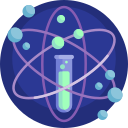
Live performances are as much about the mind as they are about the music – and drum pedals like the MIDI Controller Pedal are tapping into the neuroscience of live performance enhancement like never before. From improving brain activity during rhythm creation to enhancing musical performance through psychological effects, these innovative tools are revolutionizing the way musicians approach live shows and engage with their audiences.
The Science of Rhythm
At the heart of drum pedals lies a deep understanding of the science of rhythm. When musicians engage with these innovative tools, they’re not just tapping into their musical instincts – they’re also activating key areas of the brain associated with rhythm and timing. This heightened brain activity leads to improved concentration, focus, and creativity, enabling performers to deliver more engaging and dynamic performances on stage.
Psychological Effects of Tempo Adjustment
Tempo is a powerful tool in the hands of a musician, capable of influencing emotions and shaping the overall mood of a performance. With drum pedals, musicians have the ability to adjust tempo on the fly, allowing them to tailor their music to the needs of their audience and create more immersive and memorable experiences. Whether it’s speeding up to build excitement or slowing down to evoke emotion, the psychological effects of tempo adjustment can have a profound impact on both performers and audiences alike.
Enhancing Live Performance
In the world of live performance, every detail matters – and drum pedals are helping musicians fine-tune their performances to perfection. From adding depth and texture to rhythms to enhancing the overall sound of a performance, these innovative tools offer a wide range of benefits for performers on stage. Whether you’re a drummer looking to expand your sonic palette or a guitarist seeking to add rhythmic flair to your music, drum pedals can be a game-changer for your live performances.
READ ALSO: CRISPR Technology: Rewriting the Code of Life
The Neuroscience of Compact Design
In addition to their musical benefits, drum pedals also offer a compact design that’s optimized for performance. This streamlined approach not only saves space on stage but also minimizes cognitive load, allowing performers to focus more on their music and less on their equipment. With their intuitive interfaces and ergonomic design, drum pedals are reshaping the way musicians engage with rhythm and groove, unlocking new levels of creativity and expression in live performances.
In conclusion, drum pedals are tapping into the neuroscience of live performance enhancement, offering musicians a powerful tool for improving brain activity, enhancing musical performance, and engaging with their audiences on a deeper level. Whether you’re a seasoned professional or an aspiring artist, incorporating drum pedals into your live setup can help you take your performances to the next level and create unforgettable moments on stage.






 C&B Property Maintenance (https://www.candbpm-llc.com), offers specialized property maintenance and transformation services in complementing Connecticut’s beautification goals. Recognized as a Premier Property Transformation Company in Connecticut, it offers various property maintenance services with varying solution options; from removal of dead trees and stumps, to replanting new foliage, to fixing drainage problems, as well as designing and installing landscaping and hardscaping outdoor renovation or improvement projects.
C&B Property Maintenance (https://www.candbpm-llc.com), offers specialized property maintenance and transformation services in complementing Connecticut’s beautification goals. Recognized as a Premier Property Transformation Company in Connecticut, it offers various property maintenance services with varying solution options; from removal of dead trees and stumps, to replanting new foliage, to fixing drainage problems, as well as designing and installing landscaping and hardscaping outdoor renovation or improvement projects. According to Jon Schonfeld, a professional engineer (PE), with years of experience in building maintenance and transformation services, buildings whether commercial or residential are continuously influenced and affected by physical factors. Schonfeld, the VP of Energy & Building Technology of Buildings IOT, cites heat, pollutants, moisture and even sound. as examples of such factors.
According to Jon Schonfeld, a professional engineer (PE), with years of experience in building maintenance and transformation services, buildings whether commercial or residential are continuously influenced and affected by physical factors. Schonfeld, the VP of Energy & Building Technology of Buildings IOT, cites heat, pollutants, moisture and even sound. as examples of such factors.


















 Science enthusiasts are always on the lookout for gadgets to buy womens apple watch bands online, that will make their lives a little more exciting. They want to be able to explore and experiment with science, but they don’t have the time or resources to do so.
Science enthusiasts are always on the lookout for gadgets to buy womens apple watch bands online, that will make their lives a little more exciting. They want to be able to explore and experiment with science, but they don’t have the time or resources to do so.



 The word Chiron is a Greek word that means “the one who pierces.” The name Chiron is derived from the Greek words “cheir” and “on” which mean hand and eye respectively. Chiron was a centaur, half human and half horse. He was the son of Kronos (Cronus), the god of time, and Philyra. He was also the tutor of many heroes including Heracles (Hercules).
The word Chiron is a Greek word that means “the one who pierces.” The name Chiron is derived from the Greek words “cheir” and “on” which mean hand and eye respectively. Chiron was a centaur, half human and half horse. He was the son of Kronos (Cronus), the god of time, and Philyra. He was also the tutor of many heroes including Heracles (Hercules).

























